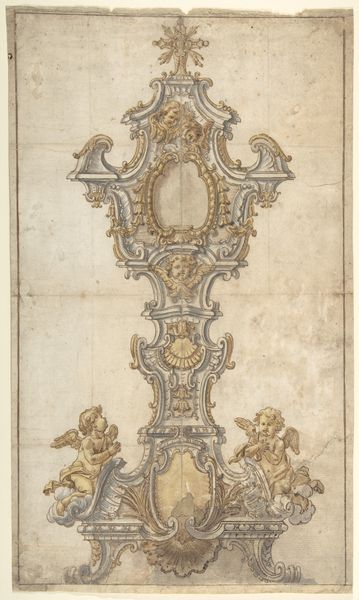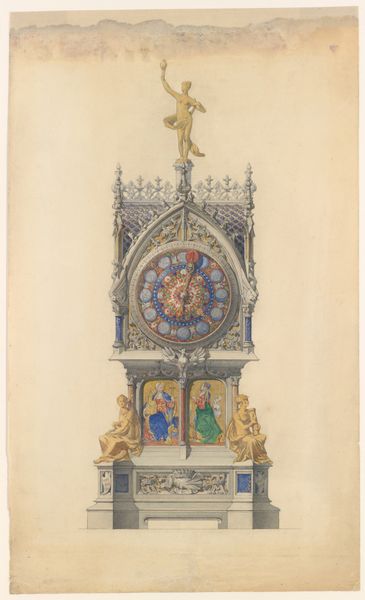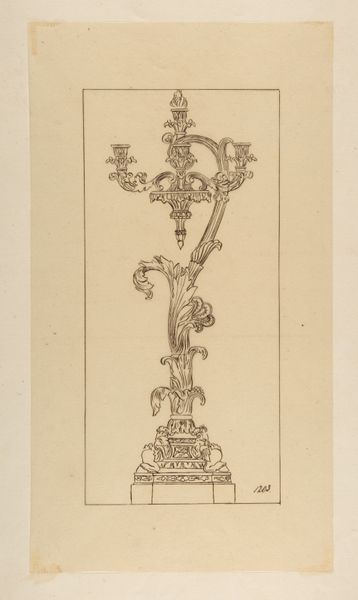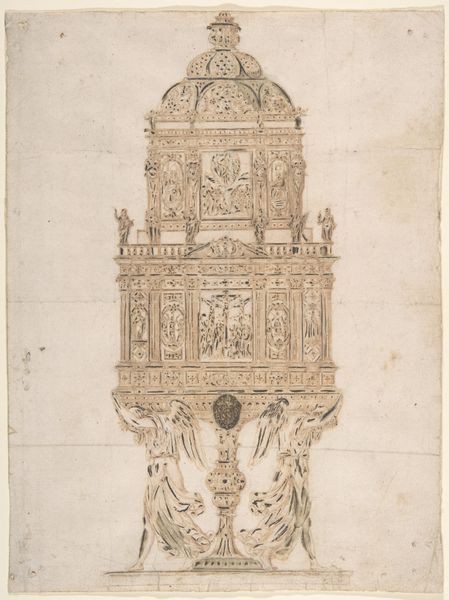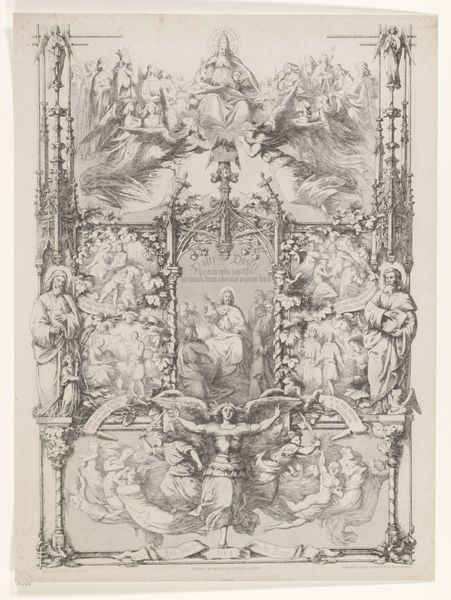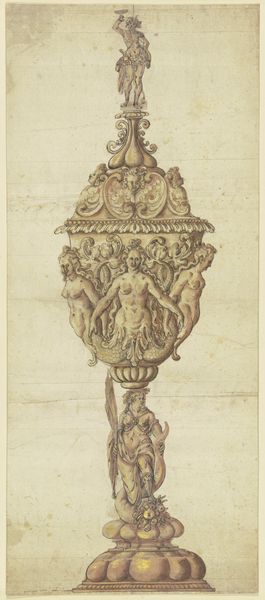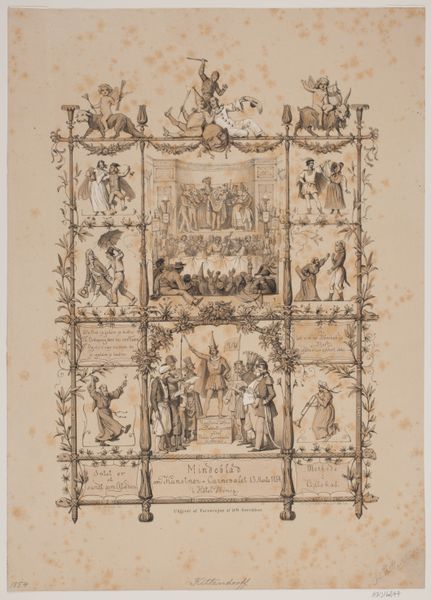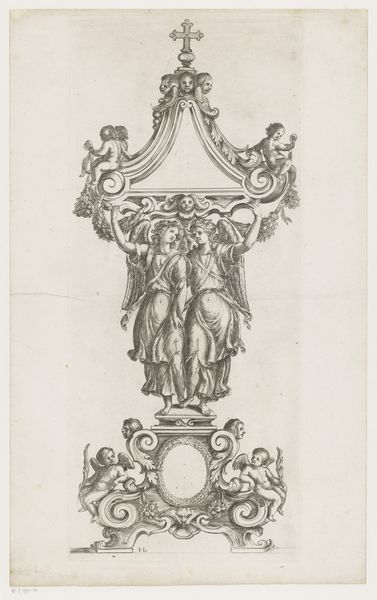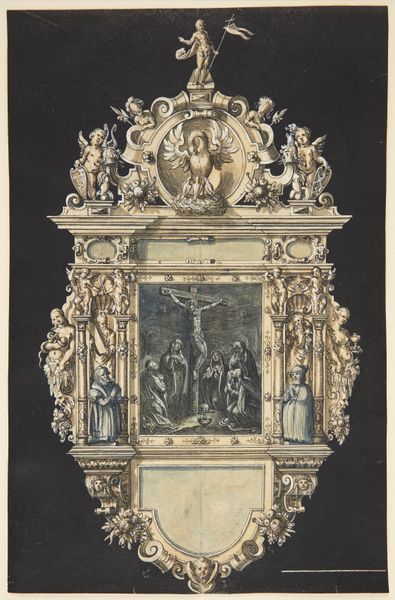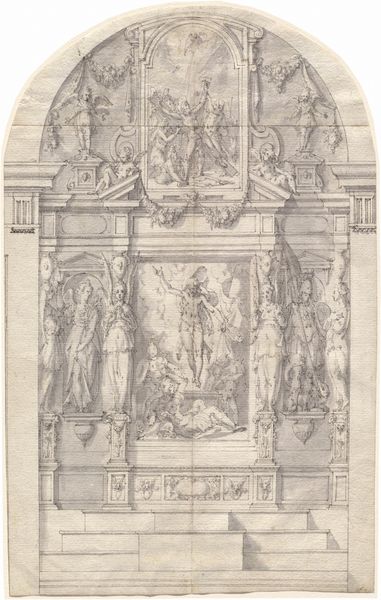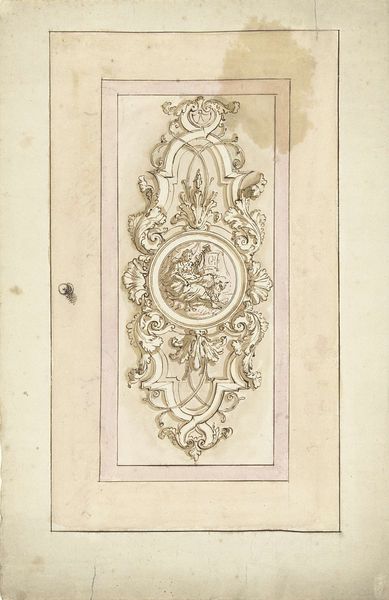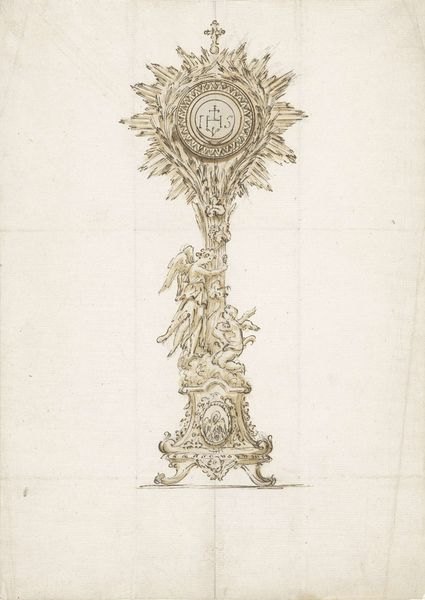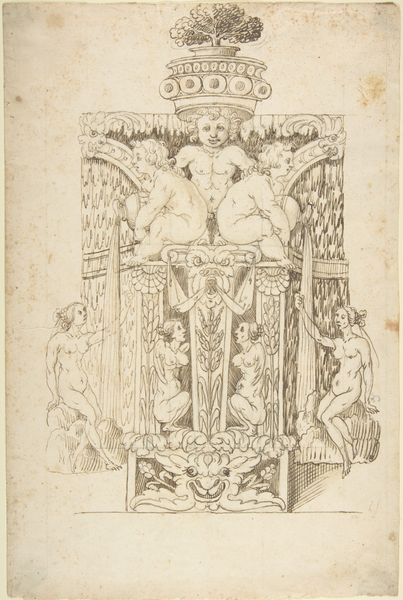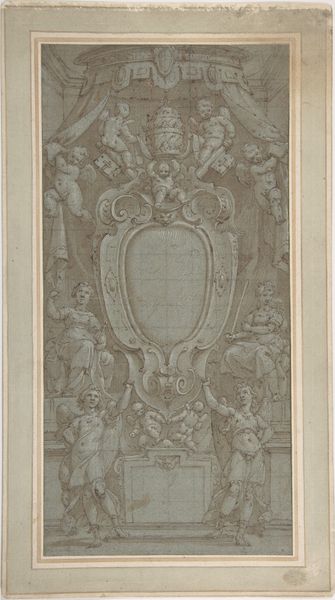
Design for an Enameled Watchcase and Châtelaine with Mythological Figures 1761 - 1771
0:00
0:00
drawing, print, watercolor
#
drawing
#
water colours
#
allegory
# print
#
watercolor
#
historical fashion
#
history-painting
#
academic-art
#
miniature
#
rococo
Dimensions: sheet: 8 11/16 x 6 3/8 in. (22 x 16.2 cm) frame: 21 x 16 in. (53.3 x 40.6 cm)
Copyright: Public Domain
Curator: At first glance, it’s a rather curious arrangement. Elegant, yes, but somewhat perplexing in its form. Editor: Well, this "Design for an Enameled Watchcase and Châtelaine with Mythological Figures," dating from 1761 to 1771 and attributed to George Michael Moser, explains the somewhat unusual shape. What we're looking at is a design proposal. Curator: Ah, I see! That makes sense. Now that I understand its intended purpose, I can appreciate the piece's delicate rococo style more fully. The symmetrical layout is fascinating. What’s your reading of it, historically speaking? Editor: Moser was clearly working within the aesthetic trends of the late 18th century. The prevalence of classical imagery indicates the era's fascination with antiquity. Notice the idealized bodies, the mythological subjects… it’s all reflective of Enlightenment ideals. Curator: Yes, I notice the cherubic figures. Are they Cupids? I wonder about their symbolic function within this decorative object. Perhaps an indication of love and devotion to be carried as a wearable sentiment? Editor: Precisely! A châtelaine was a status symbol, and decorating it with imagery related to love, virtue, or perhaps family lineage served to project a certain persona. What might be lost to the contemporary eye is that the mythological scenes wouldn’t simply have been aesthetic but carriers of moral weight too. Curator: The watercolours lend a lightness to the work, despite the weight of history they are meant to invoke. Also, looking again, you realize the historical figures aren’t frozen, but very actively emoting! Editor: Absolutely. And imagine the skill needed to translate this intricate design into enamel at such a small scale! It is a testament to the artistic craft and societal values of the era. Curator: The very concept of adorning something so utilitarian with high art seems very specific to the elites of the time, almost aristocratic. Editor: Indeed. Its existence serves as a visual record of social values during this period in a way that mirrors contemporary tastes. What accessories denote importance today? Curator: This has provided much to consider regarding taste, art, and material culture. It underscores just how much of history can be gleaned from seemingly small, decorative items. Editor: Precisely, George Michael Moser's vision demonstrates how seemingly personal items can illuminate the public values of the age.
Comments
No comments
Be the first to comment and join the conversation on the ultimate creative platform.
